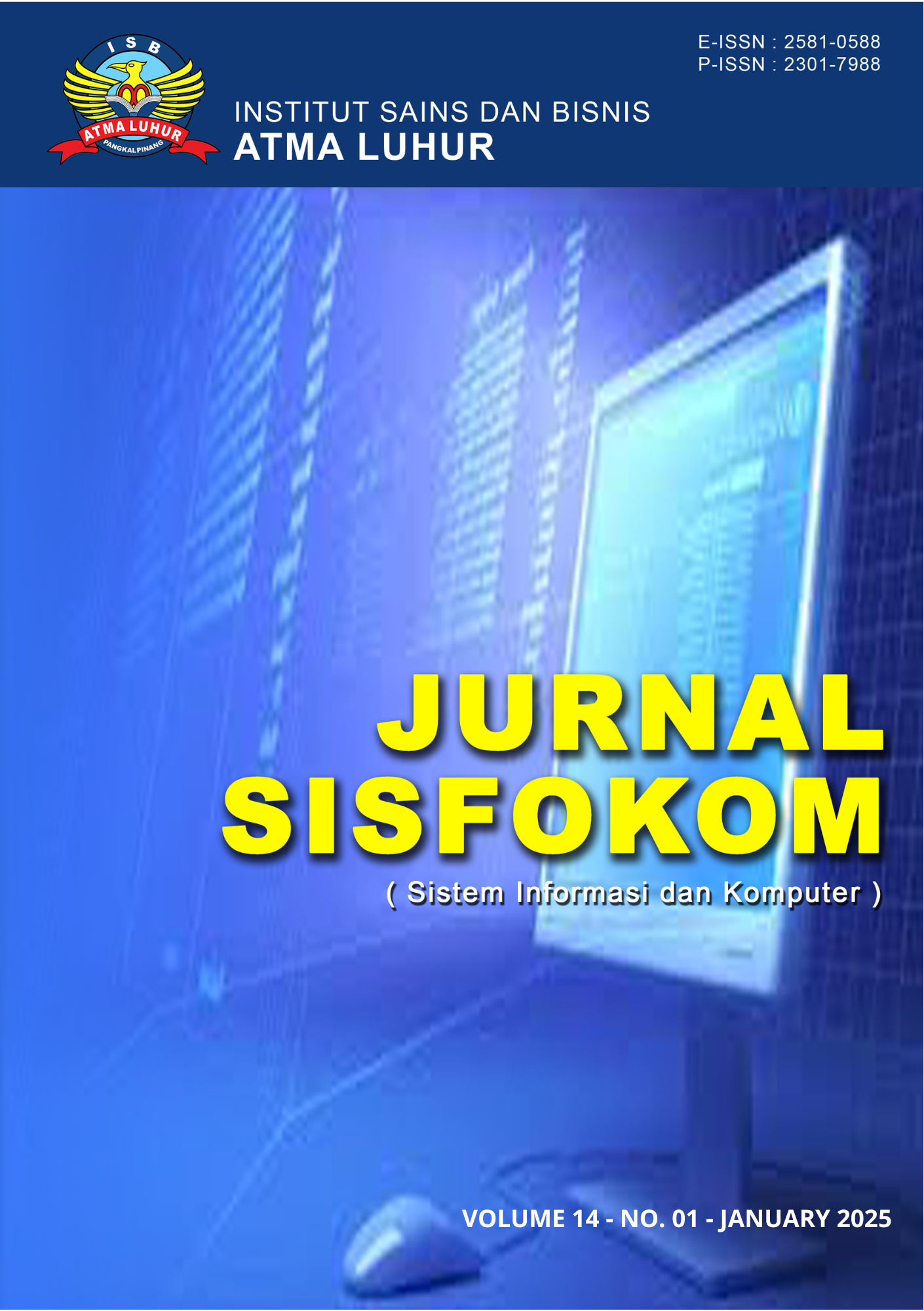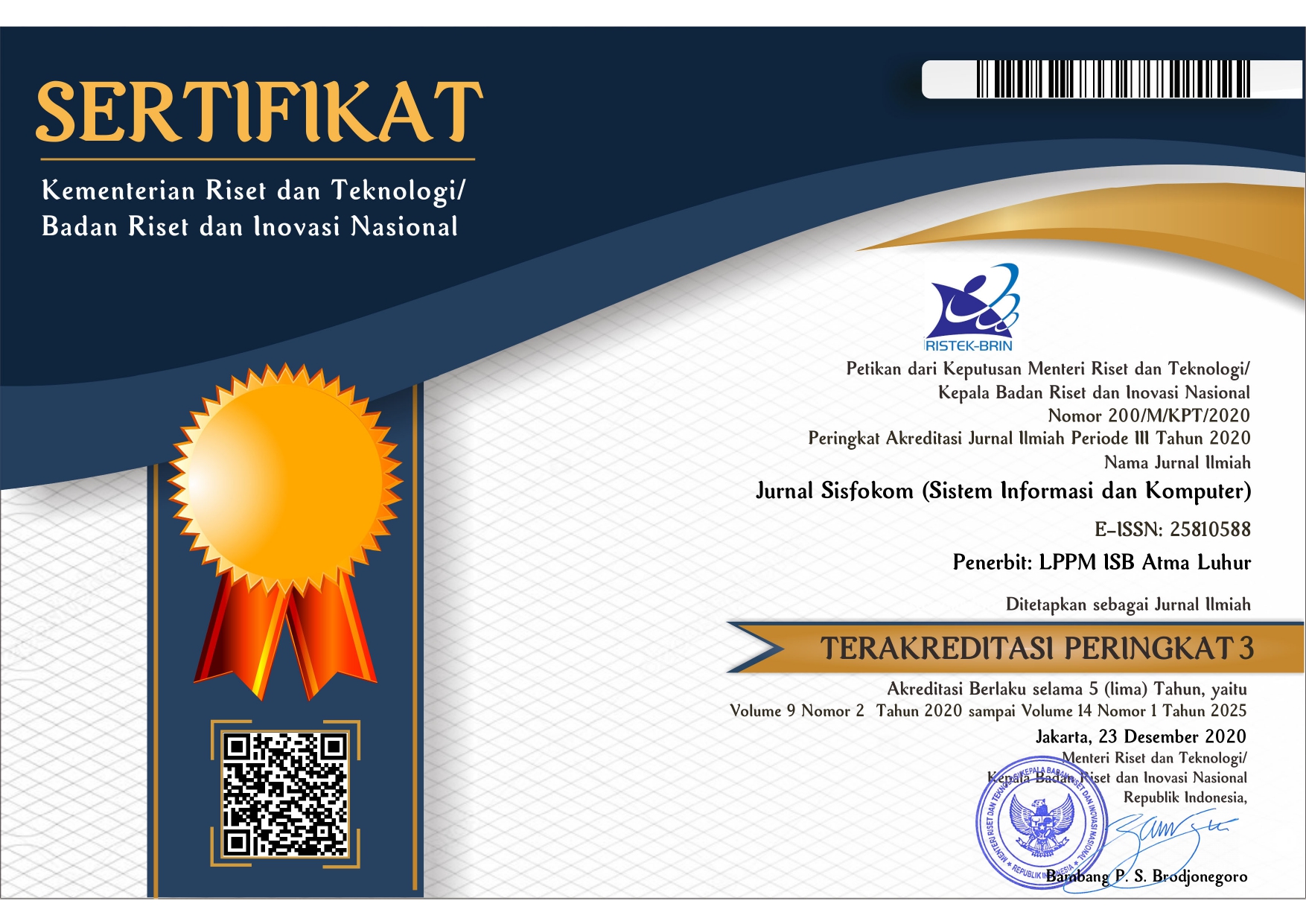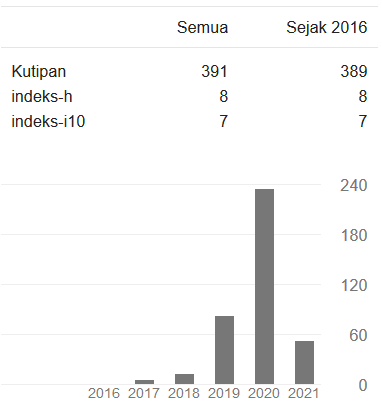Analysis to Predict the Number of New Students At UNU Pasuruan using Arima Method
DOI:
https://doi.org/10.32736/sisfokom.v14i1.2251Keywords:
New Student Prediction, ARIMA, Stationarity, Machine Learning, PredictionAbstract
New student admission is an important aspect in higher education management, including Nahdlatul Ulama University (UNU) Pasuruan. Relevant prediction of total new students is needed to support resource planning such as teaching staff, facilities, and budget. This study aims to evaluate the historical pattern of new student admissions at UNU Pasuruan and predict the number of new students in the coming years using the ARIMA (Auto Regressive Integrated Moving Average) method. The data used is historical data on new student admissions in the last five years, which is analyzed to identify trends, seasonality, and fluctuation patterns. The analysis is performed using statistical software such as Python to improve the accuracy and efficiency of the process. This study approach includes several main steps, namely collecting historical data on the number of new students, testing stationarity using the Augmented Dickey-Fuller (ADF) test, identifying model parameters through ACF and PACF graphs, and estimating ARIMA model parameters. The resulting model is evaluated using prediction error metrics such as Mean Absolute Error (MAE), Mean Squared Error (MSE), and Root Mean Squared Error (RMSE). The study findings describe that the ARIMA model (6,0,1) produces an RMSE value of 21.88 and a MAPE of 0.2%. In addition to having the smallest error score, the ARIMA model (6,0,1) also has the smallest AIC score of the various models that can be used for predictions, which is 447.44 and the largest log likelihood value, which is -214.72. The largest prediction of the number of new students is in July, which is 92.72 and the smallest in February, which is 24.43. This prediction is expected to help university management in optimizing resource planning, increasing management efficiency, and anticipating fluctuations in the number of new students in the future. This study offers new findings in the form of the use of predictive models based on historical data to support strategic decision- making, such as resource allocation and promotion planning. With these results, universities can anticipate changes in the number of enrollments more effectively, which were previously only done based on subjective estimates. The model built can also be applied to similar datasets in the future with appropriate parameter adjustments.References
A. P. T. N. &. L. D. H. Yordan, "Peramalan Penerimaan Mahasiswa Baru Universitas Samudra Menggunakan Metode Regresi Linear Sederhana.," Jurnal Teknik Informatika (Jtifa), P. 21–27 , 2019.
M. &. Y. R. Rianto, "Analisis Runtun Waktu Untuk Memprediksi Jumlah Mahasiswa Baru Dengan Model Random Forest.," Paradigma – Jurnal Komputer Dan Informatika, P. 23(1), 2021.
T. A. S. D. S. M. Dimri, "Time Series Analysis Of Climate Variables Using Seasonal Arima Approach," Journal Of Earth System Science, , 2020.
S. Aminah, "Modeling And Forecasting University Admissions Trends Using Arima," International Journal Of Advanced Trends In Computer Science And Engineering, 2022.
S. Kornelio, "Forecasting Students' Enrollment In Tanzania Government Primary Schools From 2021 To 2035 Using Arima Model.," International Journal Of Curriculum And Instruction, P. 162–174, 2024.
Adeline Purisima Dela Cruz, "Higher Education Institution (Hei) Enrollment Forecasting Using Data Mining Technique.," International Journal Of Advanced Trends In Computer Science And Engineering, Pp. 2060-2064., 2020.
D. Mirna Nachouki, "Student Course Grade Prediction Using The Random Forest Algorithm: Analysis Of Predictors' Importance. Trends In Neuroscience And Education.," Journal Of Cloud Computing, 2023.
T. Hailemeskel Abebe, " Time Series Analysis Of Monthly Average Temperature And Rainfall Using Seasonal Arima Model (In Case Of Ambo Area, Ethiopia). International Journal Of Theoretical And Applied Mathematics,," Sistem Pendukung Keputusan Untuk Umkm. [Ebook]. Ubx Press., Pp. 6(5), Hal.76., 2020.
Y. D. D. D. Lai, " Use Of The Autoregressive Integrated Moving Average (Arima) Model To Forecast Nearterm Regional Temperature And Precipitation. Weather And Forecasting,," P. 959–976. , 2020.
S. Aminah, "Modeling And Forecasting University Admissions Trends Using Arima," International Journal Of Theoretical And Applied Mathematics, 2022.
D. Jiang Li, "Wavelet Transforms Based Arima-Xgboost Hybrid Method For Layer Actions Response Time Prediction Of Cloud Gis Services," Journal Of Cloud Computing, 2023.
D. Yan Pan, "A Study On The Prediction Of Book Borrowing Based On Arima-Svr Model.," Procedia Computer Science, Pp. 93-102 , 2021.
R. Kumar, "Predicting Academic Performance By Data Mining Methods," Educational Economics, Pp. 405-419, 2021.
D. Mirna Nachouki, "Student Course Grade Prediction Using The Random Forest Algorithm: Analysis Of Predictors' Importance.," Trends In Neuroscience And Education. , 2023.
A. U. Jamila, B. M. Siregar, And R. Yunis, “Analisis Runtun Waktu Untuk Memprediksi Jumlah Mahasiswa Baru Dengan Model Arima,” Paradigma - Jurnal Komputer Dan Informatika, Vol. 23, No. 1, Mar. 2021, Doi: 10.31294/P.V23i1.9758.
B. H. Mawaridi And M. Faisal, “Prediksi Mahasiswa Baru Universitas Papua Menggunakan Autoregressive Integrated Moving Average,” Jurnal Informatika, Vol. 10, No. 2, Pp. 157–162, Oct. 2023, Doi: 10.31294/Inf.V10i2.16000.
S. A. Sinaga, "Implementasi Metode Arima (Autoregressive Moving Average) Untuk Prediksi Penjualan Mobil," Seminar Nasional Teknologi Dan Informatika (Snti), Universitas Budi Darma, Medan, Indonesia, 2023.
D. A. Fajari Dan M. F., "Aplikasi Metode Arima Dalam Meramalkan Rata-Rata Harga Beras Di Tingkat Perdagangan Besar (Grosir) Indonesia," Jurnal Agroteknologi, Vol. 6, No. 1, Hal. 1-10, 2022, Doi: 10.31316/Agroteknologi.V6i1.1766.
Farahdinna, F. (2022). Forecasting System Prototype Amount Of Printing Raw Material Inventory Needs Using The Autoregressive Integrated Moving Average (Arima) Method. Jurnal Mantik, 6(2), 1964-1970
R N Putri1, M Usman, Warsono, Widiarti, E Virginia. . (2021). Modeling Autoregressive Integrated Moving Average (Arima) And Forecasting Of Pt Unilever Indonesia Tbk Share Prices During The Covid-19 Pandemic Period. Journal Of Physics: Conference Series, 1751(1), 012027. Https://Doi.Org/10.1088/1742-6596/1751/1/012027
Downloads
Published
Issue
Section
License
Copyright (c) 2025 Jurnal Sisfokom (Sistem Informasi dan Komputer)

This work is licensed under a Creative Commons Attribution 4.0 International License.
The copyright of the article that accepted for publication shall be assigned to Jurnal Sisfokom (Sistem Informasi dan Komputer) and LPPM ISB Atma Luhur as the publisher of the journal. Copyright includes the right to reproduce and deliver the article in all form and media, including reprints, photographs, microfilms, and any other similar reproductions, as well as translations.
Jurnal Sisfokom (Sistem Informasi dan Komputer), LPPM ISB Atma Luhur, and the Editors make every effort to ensure that no wrong or misleading data, opinions or statements be published in the journal. In any way, the contents of the articles and advertisements published in Jurnal Sisfokom (Sistem Informasi dan Komputer) are the sole and exclusive responsibility of their respective authors.
Jurnal Sisfokom (Sistem Informasi dan Komputer) has full publishing rights to the published articles. Authors are allowed to distribute articles that have been published by sharing the link or DOI of the article. Authors are allowed to use their articles for legal purposes deemed necessary without the written permission of the journal with the initial publication notification from the Jurnal Sisfokom (Sistem Informasi dan Komputer).
The Copyright Transfer Form can be downloaded [Copyright Transfer Form Jurnal Sisfokom (Sistem Informasi dan Komputer).
This agreement is to be signed by at least one of the authors who have obtained the assent of the co-author(s). After submission of this agreement signed by the corresponding author, changes of authorship or in the order of the authors listed will not be accepted. The copyright form should be signed originally, and send it to the Editorial in the form of scanned document to sisfokom@atmaluhur.ac.id.









